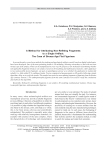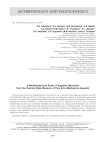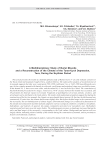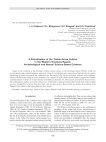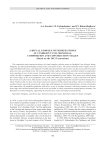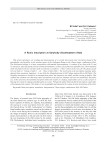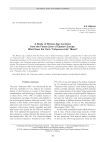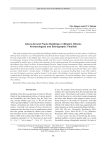Статьи журнала - Archaeology, Ethnology & Anthropology of Eurasia
Все статьи: 351
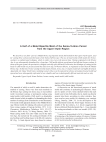
A half of a metal bipartite mold of the Seima-Turbino period from the Upper Irtysh region
Статья обзорная
Бесплатно
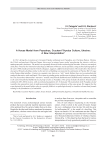
A house model from Popudnya, Cucuteni-Tripolye culture, Ukraine: a new interpretation
Статья
Бесплатно
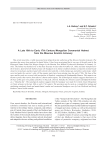
A late 16th to early 17th century Mongolian ceremonial helmet from the Moscow Kremlin Armoury
Статья обзорная
Бесплатно
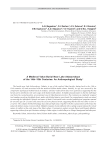
A medieval Yakut burial near lake Atlasovskoye of the 14th–15th centuries: an anthropological study
Статья научная
The burial near Lake Atlasovskoye, Yakutia, is one of the earliest Yakut burials, dating back to the 14th or 15th centuries and associated with the medieval Kulun-Atakh culture. Initially, its age was assessed by the comparative typological method based on artifacts, and later а radiocarbon estimate was generated, suggesting that the burial dates to the early stage of the Kulun-Atakh culture. Its highly unusual feature is that the individual was buried in a seated position – an exceptional case in the Yakut funerary practice. The cranium was completely wrapped in a bandage sewn from birchbark sheets, under which lethal injuries were found. Our comprehensive study was aimed at assessing the individual's lifestyle and cause of death. Postcranial bones revealed pathologal symptoms unusual for an early age (20–25) and caused by excessive physical strain, suggesting that the man was either a slave or a warrior. The complex birchbark bandage may indicate high status. Together with the seated position of the body, this makes the military status even more likely. Multiple traumatic lesions infl icted with a cutting tool indicate the violent nature of confl icts at the early stage of the Yakut culture. Craniometruic analysis reveals Buryat and Mongol affi nities, supporting epic evidence relating to Yakut origins, in which Buryat or Mongol immigrants had taken part.
Бесплатно
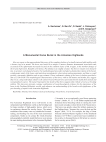
A monumental horse burial in the Armenian highlands
Статья
Here we report on the unprecedented discovery of the complete skeleton of a ritually interred adult stallion with a bronze ring in its mouth. The horse was buried in a unique 15-meters diameter monumental stone-built tomb excavated in the Aghavnatun necropolis located on the southern slopes of Mt. Aragats, in the northern fringes of the Ararat Depression, Republic of Armenia. The tumulus was roughly circular; the horse’s remains were found in situ, in an inner oval-shaped structure. Our methodological procedure included a detailed description of the burial, a taphonomic study of the bones, and meticulous morphometric observations and measurements, and thus we could provide a taxonomic defi nition and an age estimate. Direct radiometric dating of the horse’s skeleton provided a date of 2130±20 BP. The morphological characteristics of the horse, with its tall stature and slender feet, suggest that it was a large individual, similar to the extinct breed of Nisean horse previously known mainly from textual and iconographical sources. The metal ring found in the mouth of the horse suggests that it likely served as a breeding stallion. This discovery presents a unique combination of zooarchaeological evidence for the importance of the horse in the Parthian-Hellenistic worlds, and advances our understanding of the broad social signifi cance of the past breeding of equids in the Armenian Highlands.
Бесплатно
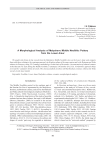
A morphological analysis of Malyshevo middle Neolithic pottery from the Lower Amur
Статья обзорная
Бесплатно
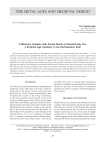
Статья
This article presents a description of Khankarinsky Dol mound 34 on the left bank of the Inya River, 1–1.5 km southeast of Chineta, Krasnoshchekovsky District, Altai Territory. Excavations revealed a cist with a supine burial of a male, whose head was oriented to the east. Beyond the eastern wall of the cist, a horse cranium and three crania of sheep were placed. Features of the burial rite suggest that the burial belongs to the Korgantass type, which is distributed over the Altai-Sayan and Kazakhstan, with certain parallels in northern China. Principal categories of offerings are analyzed, including those associated with the horse. On their basis, the horse harness is reconstructed. On the basis of the typology of artifacts and radiocarbon analysis, the burial was dated to the 5th to 4th centuries BC (possibly late 5th to early 4th centuries BC). The Korgantass burials at Khankarinsky Dol and elsewhere in the Altai Mountains indicate a migration from the eastern part of the nomadic world, apparently from northern China or the Trans-Baikal region.
Бесплатно
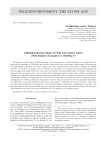
A multidisciplinary study of finds from Suchu island (1973 season, excavation II, dwelling 1)
Статья обзорная
Бесплатно
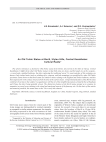
A runic inscription at Kalbak-Tash II, Central Altai, with reference to the location of the AZ tribe
Статья обзорная
Бесплатно
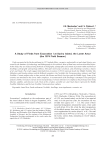
A study of finds from excavation I at Suchu island, the Lower Amur (the 1974 field season)
Статья
Бесплатно
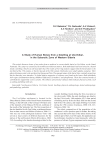
A study of human bones from a dwelling at Ust-Voikar, in the subarctic zone of Western Siberia
Статья обзорная
Бесплатно
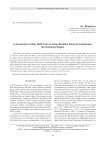
A zoomorphic antler staff from an Early Neolithic burial at Pushkinsky, the Orenburg region
Статья обзорная
Бесплатно

